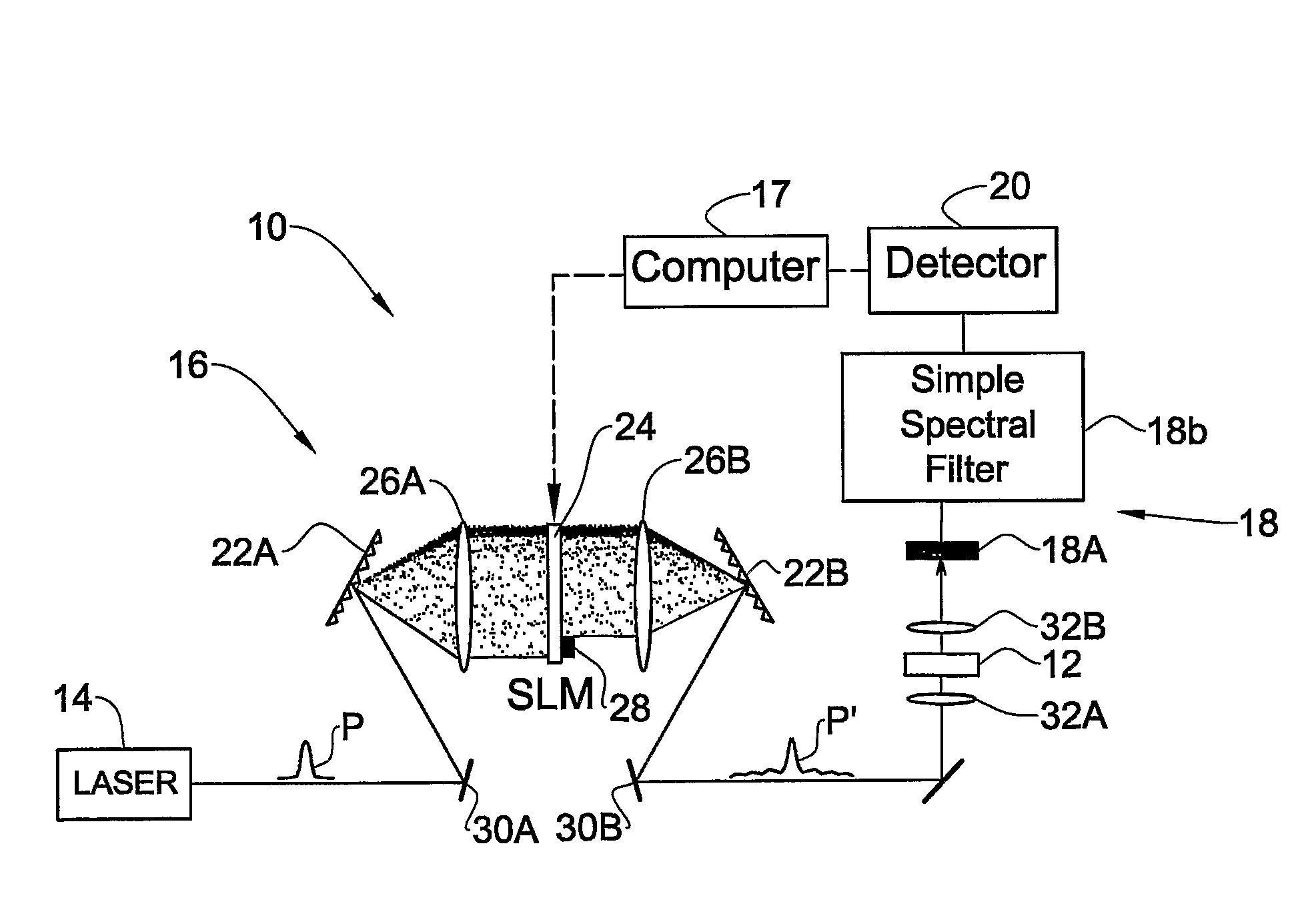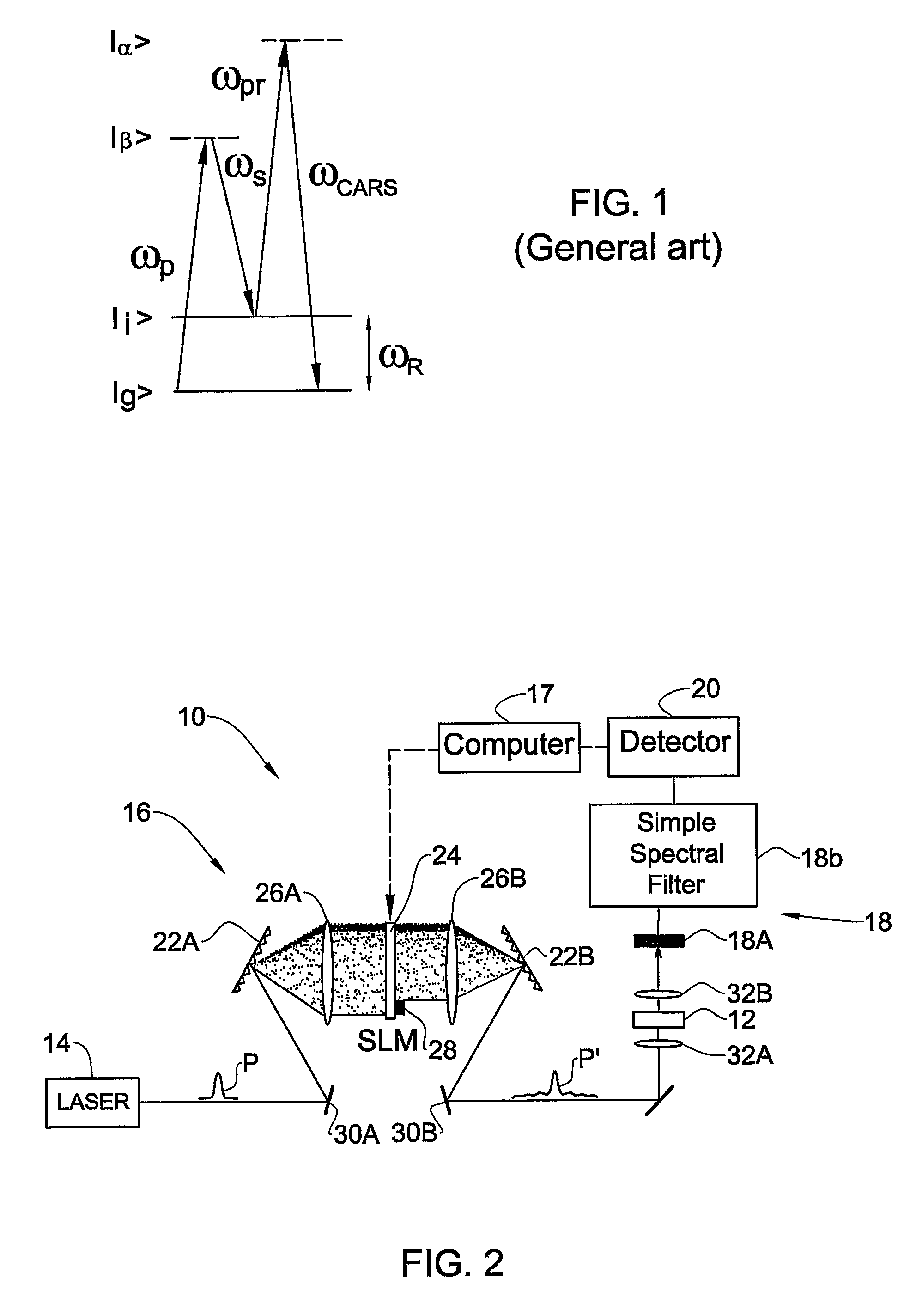Coherently controlled nonlinear raman spectroscopy
a nonlinear, coherent technology, applied in the field oframan spectroscopy, can solve the problems of lack of selectivity between neighboring energy levels and two major difficulties of femtosecond car techniques, and achieve the effects of reducing the need for post-processing, improving spectroscopic fingerprinting, and simplifying detection
- Summary
- Abstract
- Description
- Claims
- Application Information
AI Technical Summary
Benefits of technology
Problems solved by technology
Method used
Image
Examples
Embodiment Construction
[0078]FIG. 1 schematically illustrates a molecular energy level diagram showing the general principles of the CARS process, where |i> and |g> are molecular rovibrational states, and |α> and |β> are virtual levels. Resonant enhancement of the CARS process occurs when the frequency difference ΩR=ωp−ωs coincides with a vibrational level of the medium.
[0079]The technique of the present invention provides a novel spectroscopic method applicable for coherent nonlinear spectroscopy, which eliminates or at least significantly reduces the need for post-processing of the measured spectra, typical of optical spectroscopy. To this end, the present invention utilizes an exciting pulse designed to induce interference between contributions from several vibrational levels, thus facilitating all-optical processing of the entire vibrational spectrum. This is implemented by grouping a number (at least two) of levels, which serve as a much better spectroscopic fingerprint, into a single entity, rather ...
PUM
| Property | Measurement | Unit |
|---|---|---|
| FWHM | aaaaa | aaaaa |
| FWHM | aaaaa | aaaaa |
| focal length | aaaaa | aaaaa |
Abstract
Description
Claims
Application Information
 Login to View More
Login to View More - R&D
- Intellectual Property
- Life Sciences
- Materials
- Tech Scout
- Unparalleled Data Quality
- Higher Quality Content
- 60% Fewer Hallucinations
Browse by: Latest US Patents, China's latest patents, Technical Efficacy Thesaurus, Application Domain, Technology Topic, Popular Technical Reports.
© 2025 PatSnap. All rights reserved.Legal|Privacy policy|Modern Slavery Act Transparency Statement|Sitemap|About US| Contact US: help@patsnap.com



